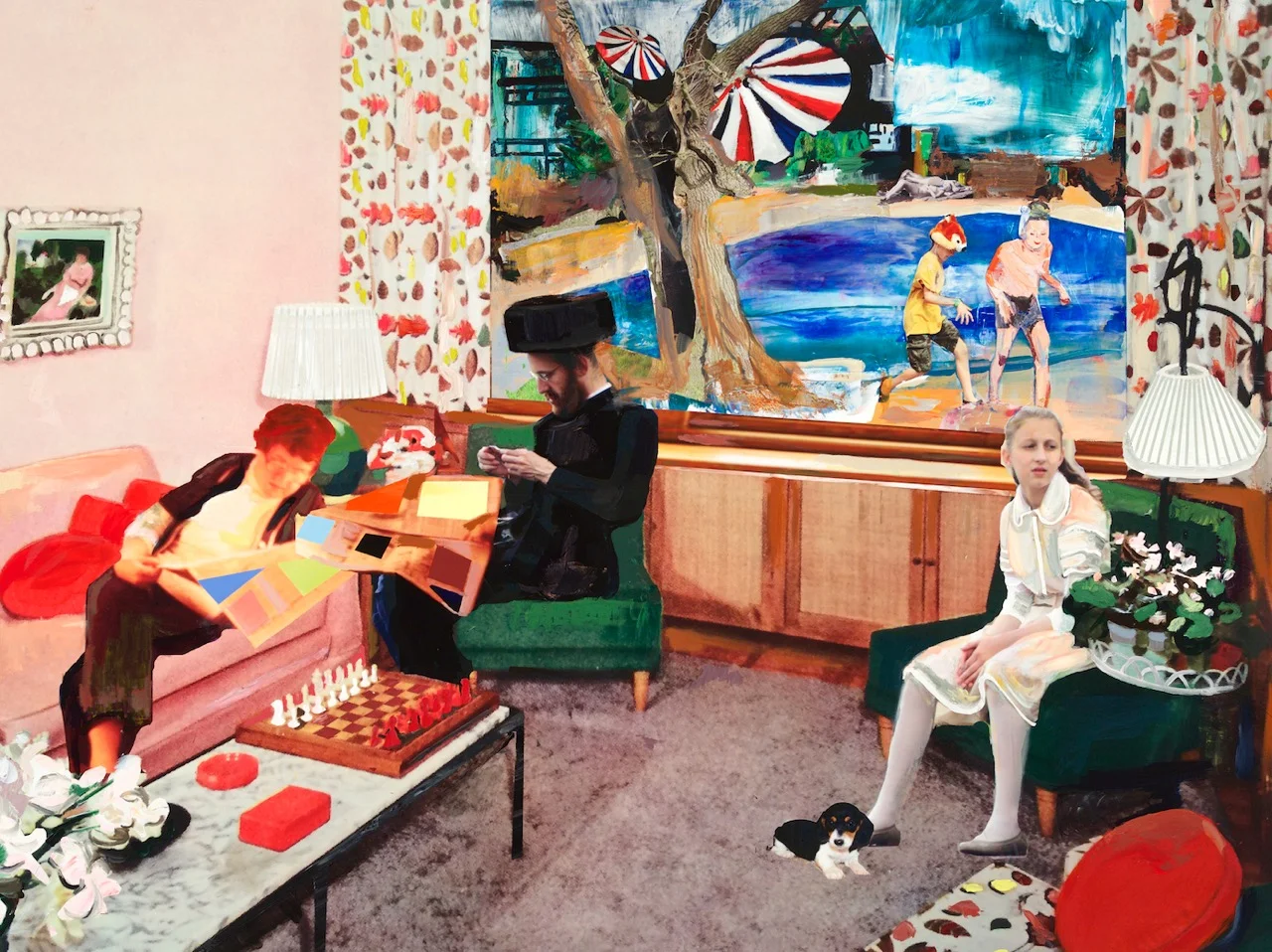Current Feature: Elizabeth Huey
Elizabeth Huey, Waiting Room, 2014.
Interview by Steve Miller
Elizabeth Huey: Well, research has proven that both nature and nurture are determinant. Humans are diverse and complex and it’s absurd for us to imagine pointing the finger at any one factor to justify motivations. Yet, there are events - people and places - that alter the course of our lives.
Recently, I’ve been considering how pain is an undervalued resource, particularly the role it plays in driving invention. My painting “Night is Deaf and the Morning Remembers” alludes to Alexander Graham Bell’s discoveries. The home fractures and the living room spills into the grass. Isn’t it profound that the man who invented the telephone and dramatically improved global communication was unable to be heard by his own deaf mother?
Elizabeth Huey, Chemistry, 2015.
Steve: So back to school.... you were studying psychology?
Elizabeth: Let me clarify: I was making art. I had the equivalent of a double major. I was painting and drawing while I was studying psychology. I've always been interested in both.
Steve: Of course, they're not mutually exclusive. So, what directs you to the location that seems specific to each painting?
Elizabeth: When I attended the Marchutz School in Aix-en-Provence, France, my painting class toured a host of post-impressionist landmarks such as the hospital in Arles that treated Van Gogh's ear and Cezanne’s beloved Mount St. Victoire. My teacher held over-sized laminated copies of paintings adjacent to the original location and invited us to imagine the artist’s vantage point. At the time, I didn’t realize how influential that would prove to be. It offered a first-hand glimpse into their symbolic color and dynamic composition. Weather, light, and location can set the mood. Painting allows me to take liberties with nature.
Elizabeth Huey, Soon Means Soon (Eames), 2017.
Elizabeth Huey, Duty and Desire, 2017.
Steve: For a decade, you were focused on the history of psychiatry. How did you make the transition from painting asylums to pools?
Elizabeth: In 2009, I had an artist residency at the Smithsonian Institution in Washington DC. It’s labyrinth of information was mind-boggling—both in its accuracy and imperfections. It is curious to recognize how aspects of the past get magnified and misconstrued and sometimes simply lost. It's easy for me to see a correlation in psychoanalysis...the similarities in the phenomenon of remembering, exaggerating, and forgetting.
This intensive research also led me to mine imagery from a stockpile of early medical trade cards. Water as a curative substance began to emerge. For centuries, water has been used as a medicinal salve and a symbol for the intangible. The pool is a realm of therapeutic cleansing and I think living with an image of water encourages a feeling of freedom and restoration.
To read the full article from our Issue Humanity, visit here











